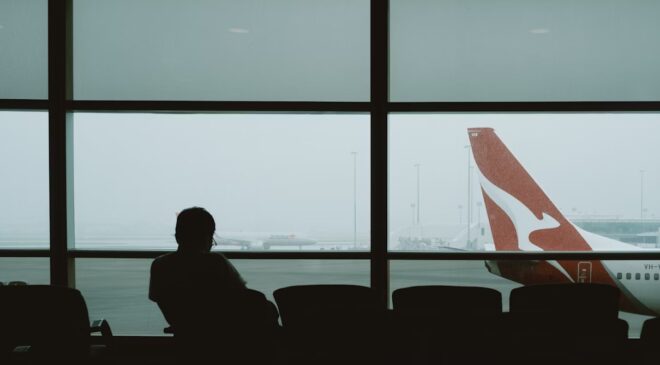Flight Delay Compensation: Common Mistakes and How to Avoid Them
Want to know the most expensive mistake air passengers make?
They miss out on hundreds of dollars in compensation because they don’t know the rules.
Almost 2% of departures from EU airports were either significantly delayed or cancelled in 2024. That’s thousands of passengers who could be entitled to compensation – but most walk away empty-handed.
Here’s the problem:
Most passengers make critical errors that cost them their rightful compensation. These mistakes can mean the difference between getting up to €600 in your pocket or getting nothing at all.
Time to master these essentials:
- The Biggest Mistake: Missing Your Filing Deadlines
- Not Understanding Which Delays Actually Qualify
- Accepting the Wrong Type of Compensation
- Failing to Document Everything Properly
- Not Knowing Your Rights for Different Airlines
- Giving Up Too Early on Your Claim
The Biggest Mistake: Missing Your Filing Deadlines
Here’s the most expensive mistake passengers make…
They wait too long to file their claim.
And here’s the thing that catches most people off guard…
The deadline to file compensation claims varies wildly depending on where the airline is based. Not where you live or where you’re flying to.
For example, in Germany passengers have 3 years to claim compensation. But in France, it’s 5 years, and in the UK it’s 6 years. The deadline is calculated at the end of the year, so if there was a flight delay in 2021, compensation could be claimed until the end of 2024.
But here’s where it gets tricky:
Many passengers think they can file anytime within these periods. While technically true, airlines become much less cooperative as time passes. The smart move? File the claim as soon as possible after the disruption.
When dealing with specific airlines like Wizz Air flight delay compensation, timing is everything. The sooner the claim gets submitted, the better the chances of success.
Not Understanding Which Delays Actually Qualify
This is where tons of passengers go wrong…
They assume every delay equals automatic compensation.
That’s not how it works.
Here’s what actually qualifies:
The flight must arrive at the final destination 3 hours or more after the scheduled time. And the delay must be the airline’s fault – not due to “extraordinary circumstances.”
What counts as the airline’s fault:
- Technical problems with the aircraft
- Crew scheduling issues
- Overbooking
- Airport operational problems
What doesn’t count:
- Bad weather
- Air traffic control strikes
- Security incidents
- Natural disasters
Air traffic volume in Europe grew by 3.7% in early 2025, putting additional pressure on systems and causing more delays. But not all of these delays qualify for compensation.
Pretty important to know the difference, right?
Accepting the Wrong Type of Compensation
Airlines love offering vouchers and travel credits instead of cash.
Why? Because they know many passengers will never use them.
But here’s what passengers need to know…
There’s a right to choose cash compensation over vouchers. Airlines must offer monetary compensation first – cash, cheque, or bank deposit. They can offer vouchers too, but only if the voucher value is higher than the required monetary compensation.
The compensation amounts are fixed:
- €250 for flights up to 1,500km
- €400 for flights 1,500-3,500km
- €600 for flights over 3,500km
Don’t let airlines pressure anyone into accepting less than they’re owed.
Failing to Document Everything Properly
Documentation mistakes kill more compensation claims than any other factor.
Here’s what must be kept:
- Boarding passes (paper or digital)
- Original flight tickets
- Receipts for any expenses during the delay
- Photos of departure boards showing the delay
- Any written communication from the airline
Missing even one piece of documentation can doom a claim. Airlines use incomplete documentation as an excuse to deny compensation.
Pro tip: Take photos of everything with the phone. It’s the easiest backup system.
And don’t forget to save all email communications from the airline about the delay. These often contain crucial information about the cause of the delay, which can make or break a compensation claim.
Not Knowing Your Rights for Different Airlines
This catches passengers off guard constantly…
Rights change depending on which airline someone’s flying and where the flight operates.
EU flights (covered by EU261):
- Departing from EU airports on any airline
- Arriving at EU airports on EU airlines
- Up to €600 compensation for delays over 3 hours
US flights:
- No federal compensation requirement for delays
- 2024 DOT rules require automatic refunds for delays over 3 hours domestic/6 hours international
- Individual airline policies vary
Canadian flights:
- Compensation based on airline size and delay length
- Large airlines: up to $1,000 CAD
- Small airlines: up to $500 CAD
Not understanding these differences means missing out on compensation that’s rightfully owed.
Giving Up Too Early on Your Claim
Airlines count on passengers giving up.
Here’s their playbook:
- Delay responding to the claim
- Ask for additional documentation
- Deny the claim with vague reasons
- Hope passengers don’t follow up
Don’t fall for it.
Airlines have 30 days to respond to compensation claims in many jurisdictions. If they don’t respond or the response is unsatisfactory, escalation to aviation authorities is the next step.
Keep pushing back. Most successful claims require 2-3 rounds of communication.
Many passengers give up after the first rejection, but that’s exactly what airlines want. Persistence pays off – literally. Airlines know that determined passengers are more likely to escalate claims, so they often approve compensation on the second or third attempt.
The Right Way to File Your Claim
Now that the mistakes are clear, here’s the proper approach:
Step 1: Check if there’s qualification
- Arrival delay of 3+ hours
- Airline’s fault (not extraordinary circumstances)
- Flight covered by applicable regulations
Step 2: Gather documentation
- Boarding passes and tickets
- Expense receipts
- Photos of delay information
- Written delay notifications
Step 3: File immediately
- Don’t wait – file as soon as possible
- Use the airline’s official claim form
- Reference the specific regulation (EU261, etc.)
- Keep copies of everything
Step 4: Be persistent
- Follow up if no response within 30 days
- Don’t accept the first denial
- Escalate to aviation authorities if needed
- Consider using professional claim services for complex cases
Step 5: Know when to get help If the claim gets rejected multiple times or the airline stops responding, consider professional help. Services like AirHelp or ClaimCompass can handle the process, though they take a commission from any successful claim.
Taking Control of Your Compensation
Flight delay compensation isn’t automatic – but it’s often substantial when done right.
The key is avoiding these common mistakes that cost passengers thousands in rightful compensation every year. With over 60,000 flights disrupted during peak summer months alone, preparation and knowledge are the best defenses.
Remember: Airlines are counting on these mistakes. Don’t give them the satisfaction.
File early, document everything, know the rights, and never give up on a legitimate claim. That compensation money belongs in passengers’ pockets – not the airline’s.




